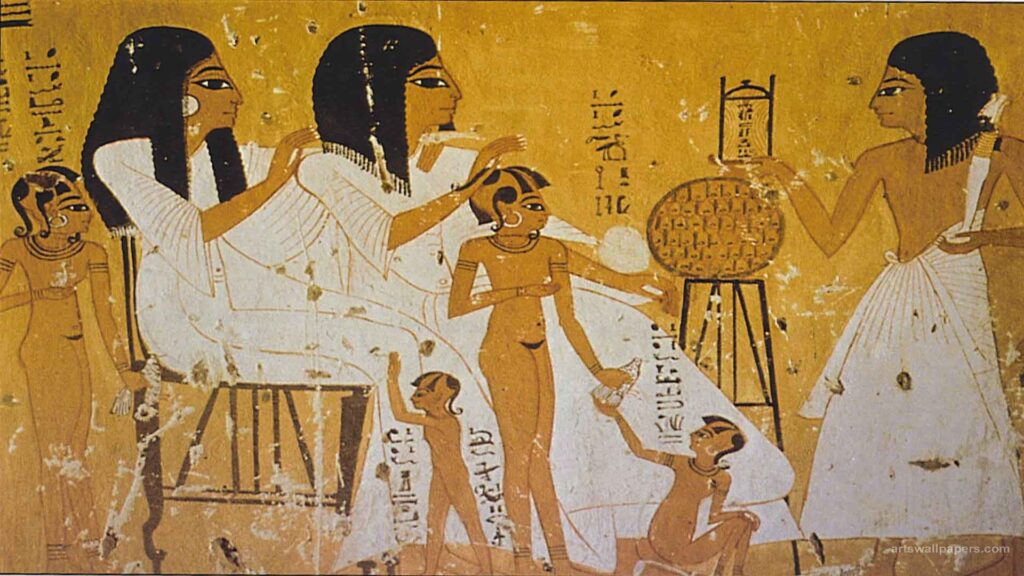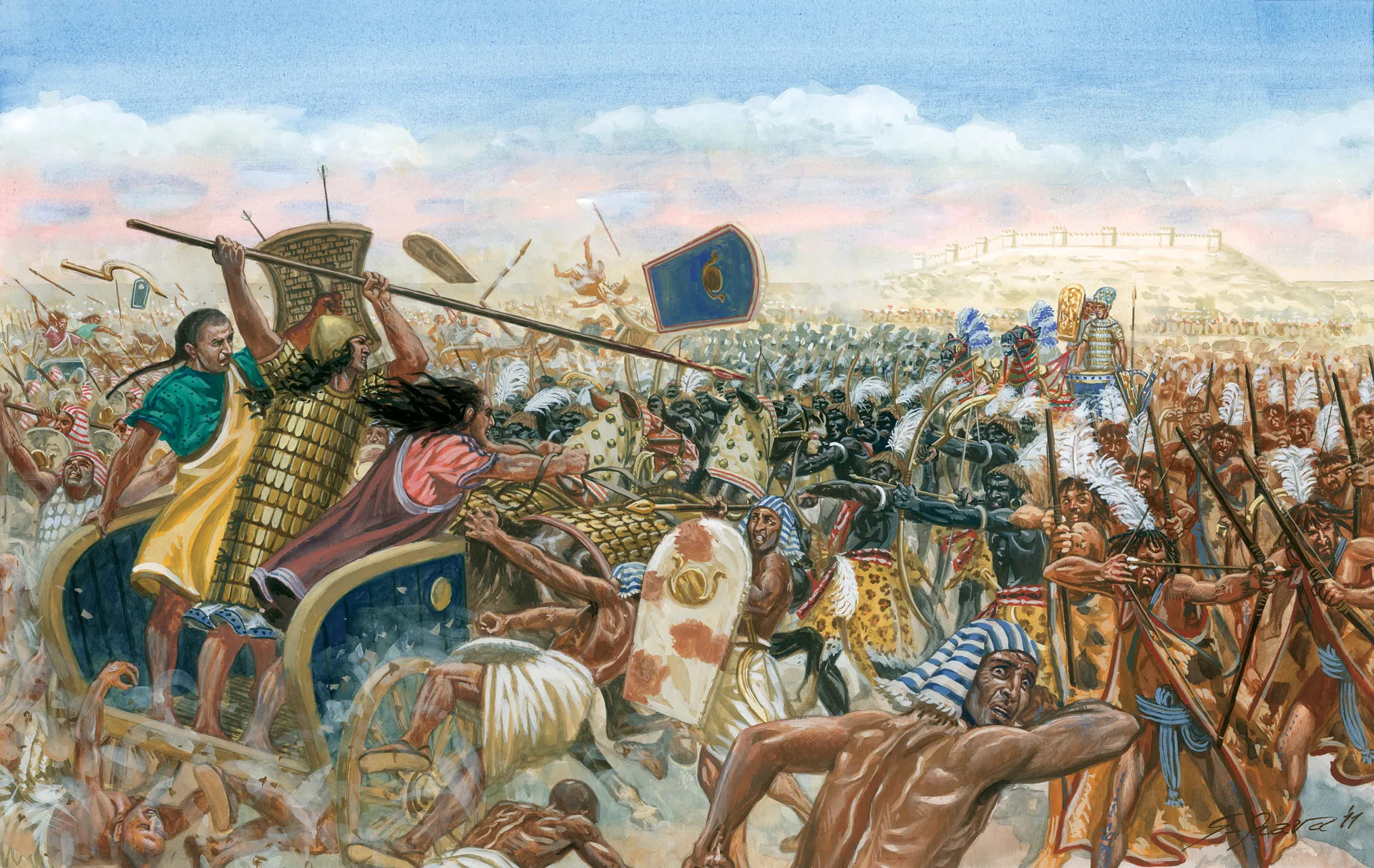Ancient Egyptian paintings—eternal masterpieces depicting life, mythology, and undying beliefs—have endured for over 5,000 years, standing as icons of one of the four great ancient civilizations. If you’re curious about ancient Egyptian art, the most famous ancient Egyptian painting themes, or the hidden meanings behind those enigmatic reliefs, this guide will take you on a captivating journey from the Valley of the Kings to vibrant wall frescoes.
Ancient Egyptian Art: The Foundation of Ancient Egyptian Paintings
Ancient Egyptian art wasn’t just painting; it was a religious and social tool, spanning from the 6th millennium BCE to the 4th century CE. These ancient Egyptian paintings were often rendered on tomb walls, papyrus, or reliefs, designed to grant “eternal life” to their subjects.
How Ancient Egyptian Art Began: History and Social Context
Ancient Egyptian art evolved alongside the Pharaohs’ dynasties, from prehistoric times to the Roman era in Egypt. There was no word for “art”—every piece served a functional purpose, tied to religion and ideology
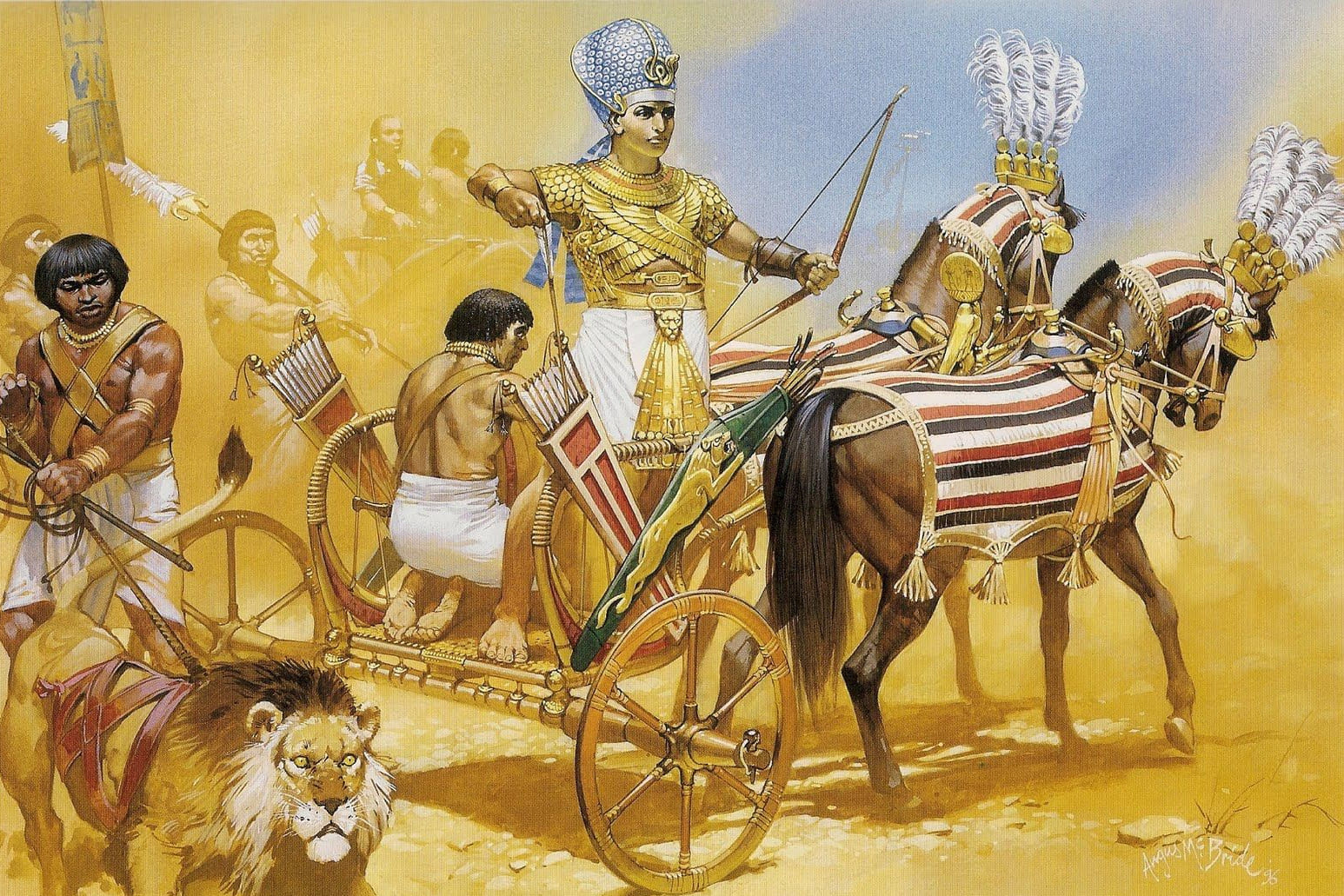
Predynastic Period (6000–3000 BCE): Simple cave drawings capturing hunts and nature. Old Kingdom (2686–2181 BCE): The rise of pyramids and intricate wall paintings, like those at Saqqara. New Kingdom (1550–1070 BCE): The pinnacle, with Tutankhamun’s tomb featuring vivid colors.
Ancient Egyptian paintings mirrored beliefs in the afterlife, where art ensured the soul’s immortality. For contemporary echoes of such timeless motifs, explore a Hanoi art gallery showcasing Vietnamese artwork inspired by ancient legacies.
The Role of Ancient Egyptian Paintings in Ancient Society
Ancient Egyptian paintings went beyond decoration—they told stories, educated, and protected. Rendered in idealized, non-realistic styles, they glorified Pharaohs and gods.
Religion: Images of deities aided souls in navigating the underworld. Society: Reliefs depicted labor and festivals, reinforcing cosmic order (Ma’at). Preservation: Most survivors come from tombs, offering profound insights into Egyptian daily life.
Ancient Egyptian art exemplifies conservatism, with styles barely evolving over millennia.
Characteristics of Ancient Egyptian Paintings: Enigmatic 2D Style and Vibrant Colors
The hallmarks of ancient Egyptian paintings lie in their simplified 2D approach, akin to modern comics, yet infused with profound religious depth.
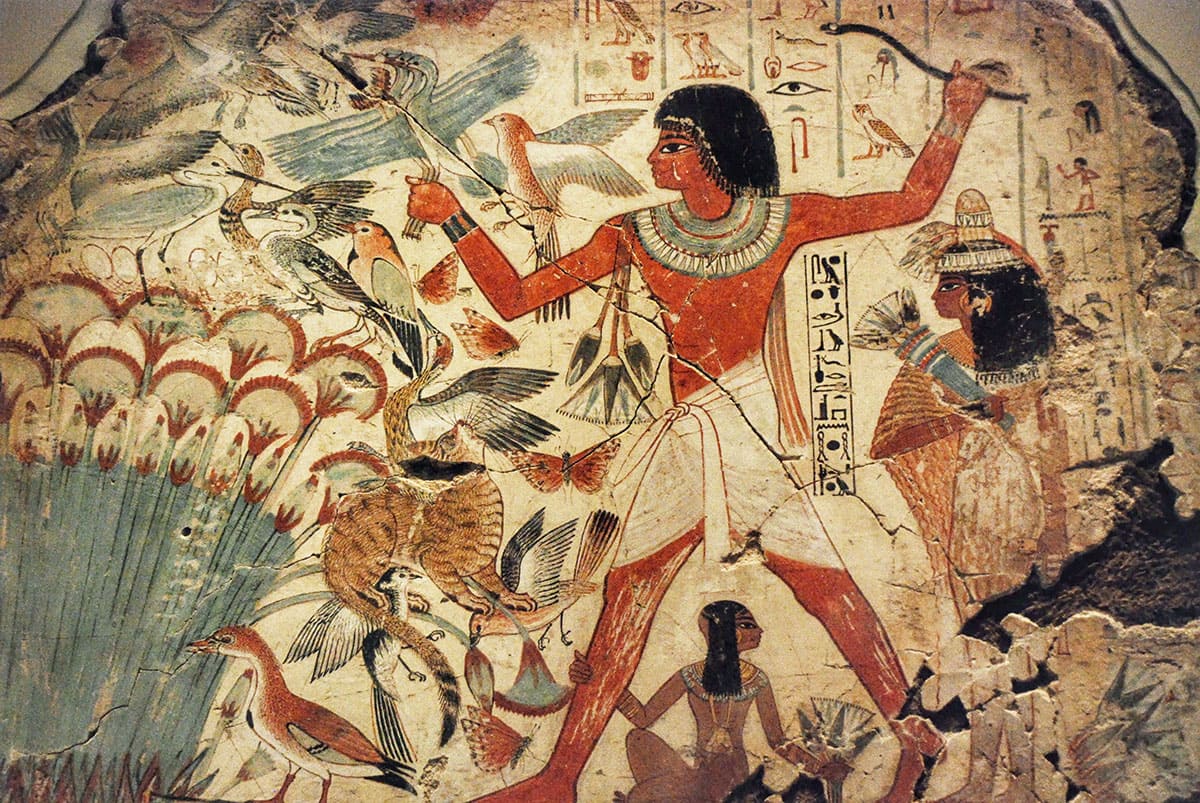
What Defines Ancient Egyptian Painting Characteristics? Key Techniques and Colors
Ancient Egyptian paintings employed a flat 2D plane for storytelling, with standout features:
2D Style: Figures shown in profile for bodies and animals, frontal for eyes and shoulders—creating that iconic “Egyptian walk.” Symbolic Colors: Black (death), red (vitality), blue (Nile River), gold (divinity), lapis (sky). Hierarchical Sizing: Pharaohs towered over slaves to denote status. Techniques: Painted on plaster, papyrus, or stone, blending carving and coloring.
These ancient Egyptian painting characteristics make them comic-like, ideal for broadly narrating life.
Conservatism and Influence of Ancient Egyptian Painting Characteristics
The style remained remarkably consistent, reflecting faith in a stable universe. It shaped Greek and Roman art, even inspiring modern comics.
Conservatism: No “art for art’s sake”—everything served religion. Influence: Artists like Picasso drew angular cues from Egyptian reliefs for Cubism.
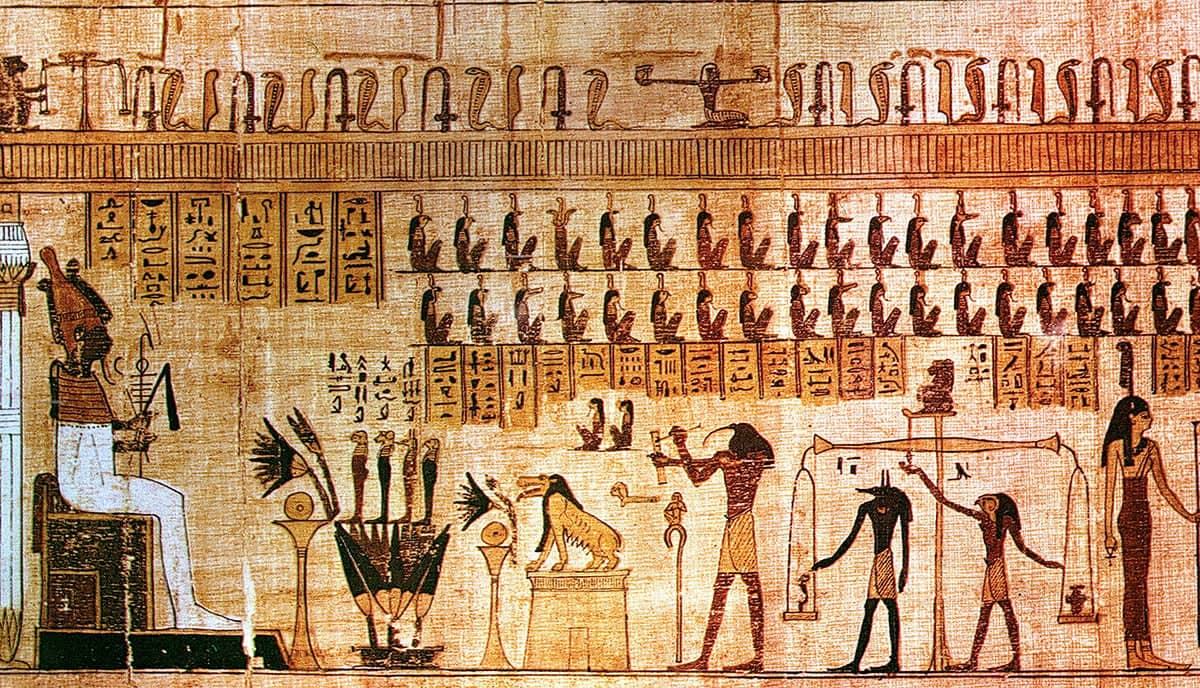
Themes in Ancient Egyptian Paintings: Popular Motifs and Their Meanings
Themes in ancient Egyptian paintings revolved around daily life, mythology, and the afterlife, with six standout categories.
Which Ancient Egyptian Painting Themes Stand Out? From Music to Deities
Music and Dance: Reliefs of festivals and rhythmic labor in tombs, symbolizing joy and rituals. Gods and Hybrid Beings: Over 2,000 deities, including Amon (king of gods, ram-headed), Ra (sun god, falcon-headed), Mut (mother goddess, cobra/cat form), Horus (sky), Anubis (mummification), Osiris (rebirth). Pharaohs and Queens: Rulers as gods, like warrior Ramesses II or Nefertari (Ramesses’ wife, in the Valley of the Queens’ finest tomb). Paradise and Underworld: The soul’s perilous journey to immortality, judged by gods. Funerary Rites and Book of the Dead: Lavish funerals and guides for the soul. Mummification and Soul Preservation: Anubis embalming, protective amulets, and deceased biographies.
Ancient Egyptian painting themes echo the belief that “death is a temporary interruption.”
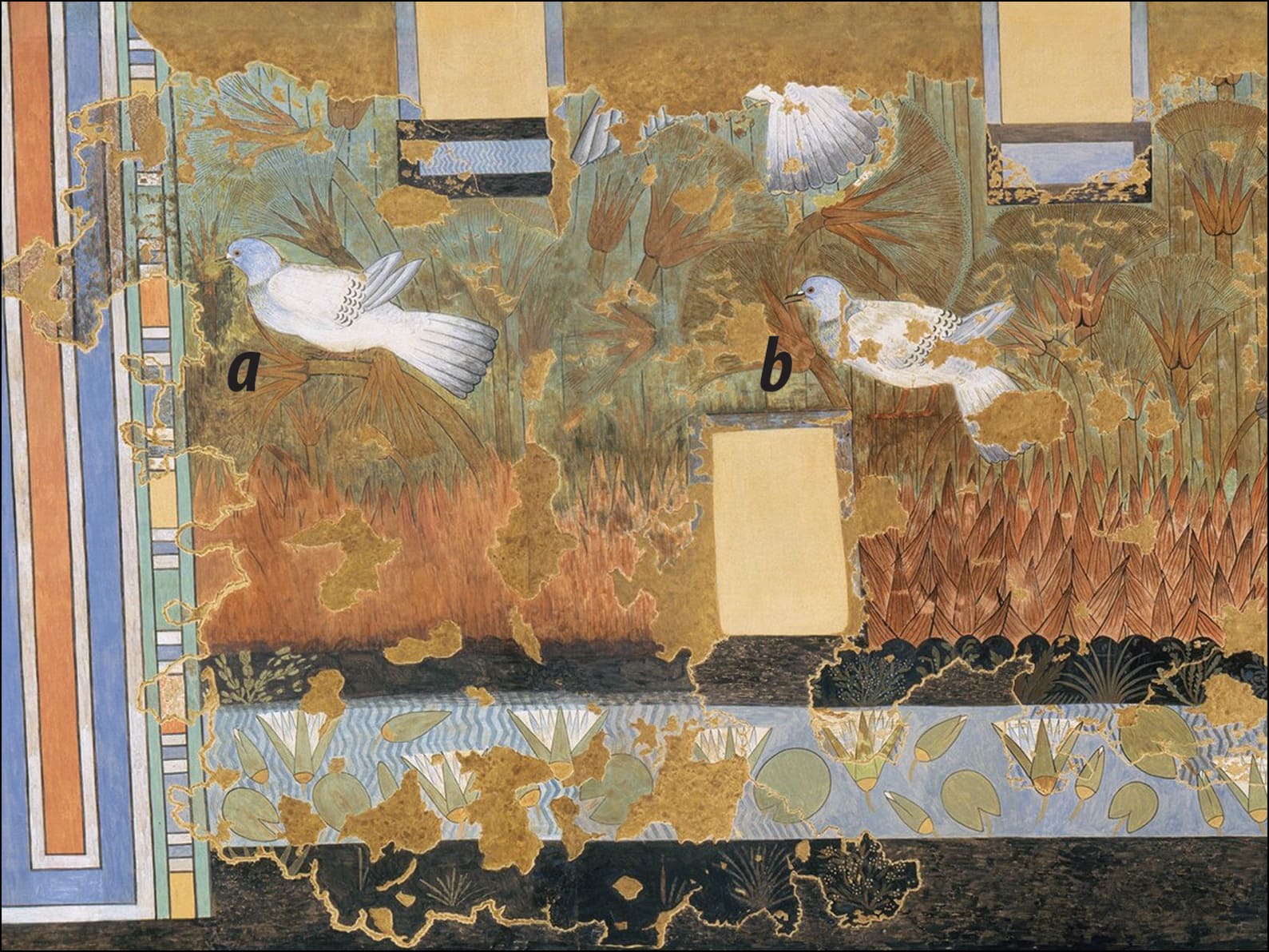
Meanings of Ancient Egyptian Paintings: From Religion to Society
The meanings of ancient Egyptian paintings transcended aesthetics, holding educational and spiritual value.
Religion: Granted eternity to souls, warding off chaos. Society: Affirmed Pharaohs’ status, documenting labor and celebrations. Culture: Storytold like comics, idealizing life for inspiration.
These paintings illuminate Ma’at—the cosmic order—for posterity.
Famous Ancient Egyptian Paintings: Top Masterpieces You Must Know
Famous ancient Egyptian paintings often hail from tombs, with six iconic examples.
What Are the Most Famous Ancient Egyptian Paintings?
Banquet and Dance Scene (Tomb of Nebamun, 1350 BCE): Joyful reliefs of swirling farmers and musicians, capturing everyday bliss. Amon-Ra Painting (Karnak Temple): The sun god sailing through the night, embodying creation and renewal. Ramesses II (Abu Simbel): The Pharaoh single-handedly battling thousands, showcasing divine might. Nefertari Offering (Tomb QV66): The queen presenting flowers to gods, with exquisite tomb wall details. Book of the Dead (Papyrus of Ani, 1250 BCE): Illustrations of soul judgment and afterlife voyages. Anubis Embalming (Tutankhamun’s Tomb): The jackal-headed god guiding souls, with safeguarding spells.
These famous ancient Egyptian paintings grace the Cairo Museum and British Museum.
Influence of Ancient Egyptian Paintings on Modern Art
Ancient Egyptian paintings profoundly shaped contemporary visual arts.
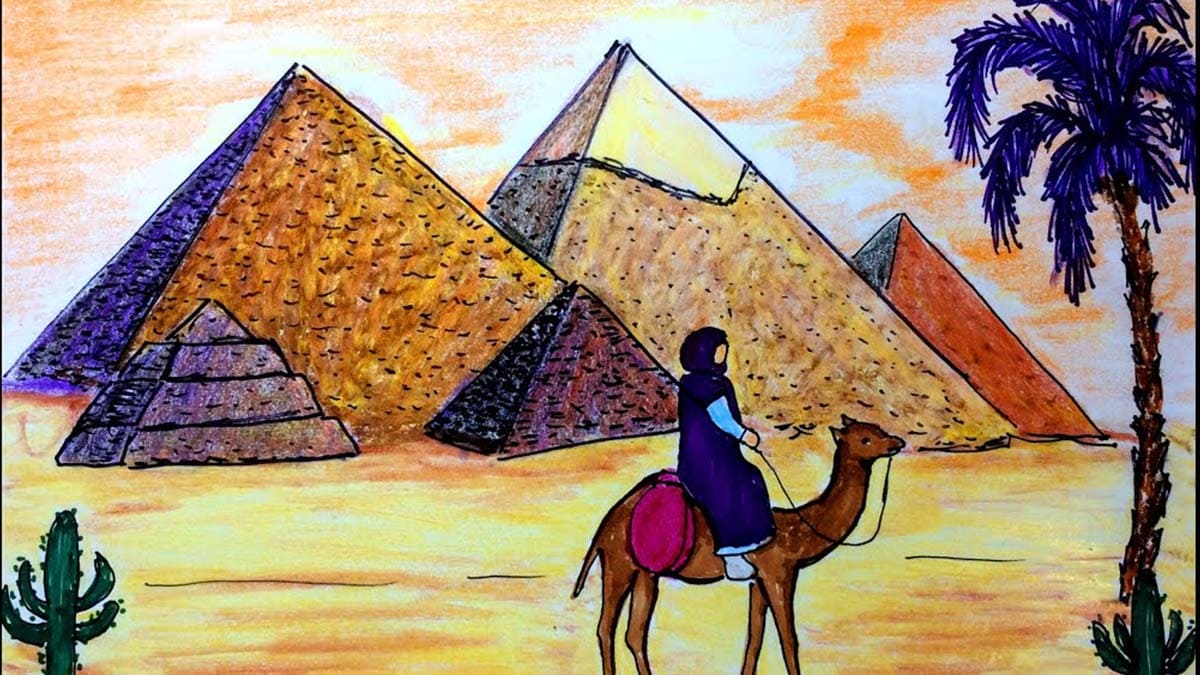
How Do Ancient Egyptian Paintings Influence Modern Artists?
Fine Art: Picasso’s Cubism borrowed sharp angles from Egyptian reliefs. Design: God motifs in fashion and architecture, like Vegas pyramids. Film: “The Mummy” scenes draw from ancient wall art. Digital Art: Games like Assassin’s Creed recreate ancient Egyptian paintings.
Today, recreations of ancient Egyptian paintings use oils, acrylics, or watercolors for a modern twist.
Legacy of Ancient Egyptian Paintings: Lessons for Future Generations
Ancient Egyptian paintings form an immortal legacy, reminding us of art’s power in cultural preservation. They’re not mere images but narratives of faith, vitality, and eternity.
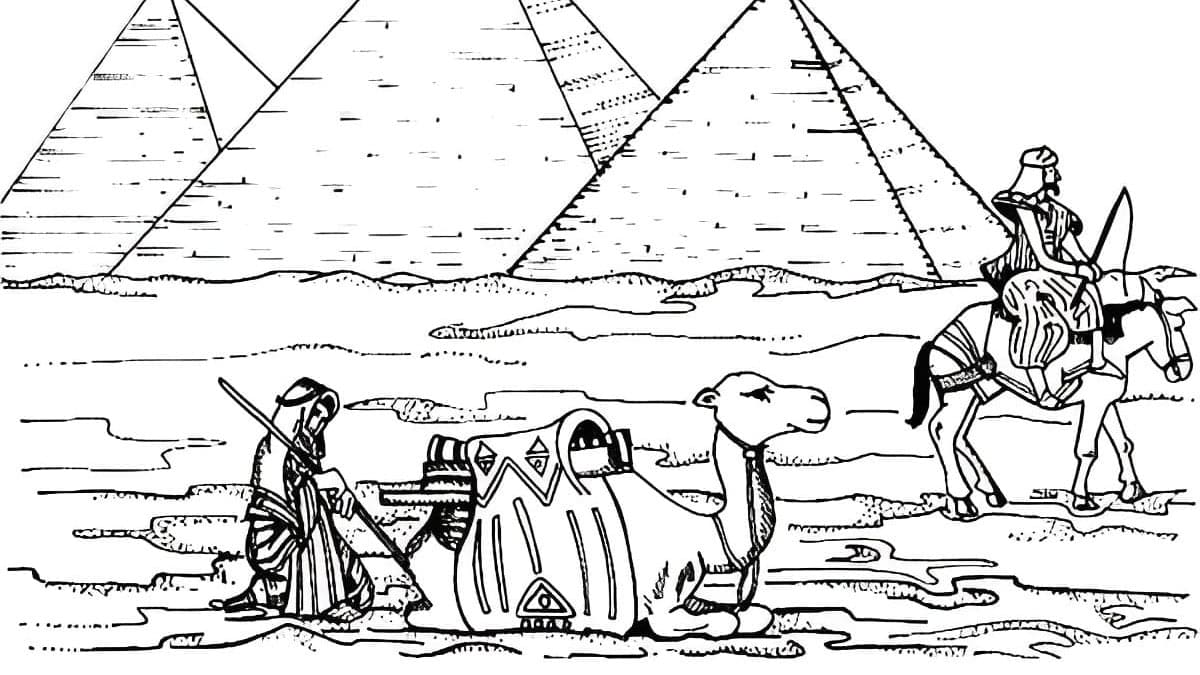
If you’re passionate, visit the Egyptian Museum in Cairo or try painting ancient Egyptian art in your own style. Which masterpiece captivates you most? Share in the comments!

